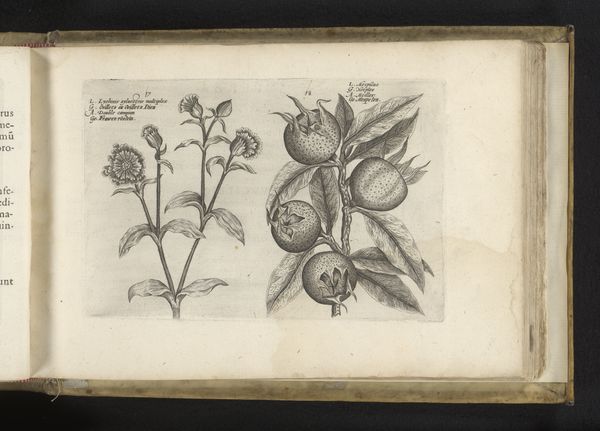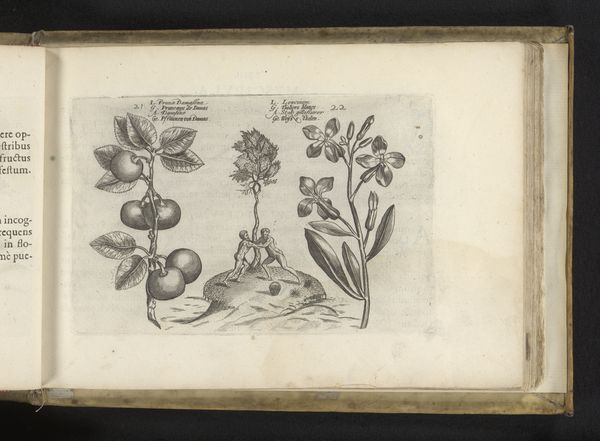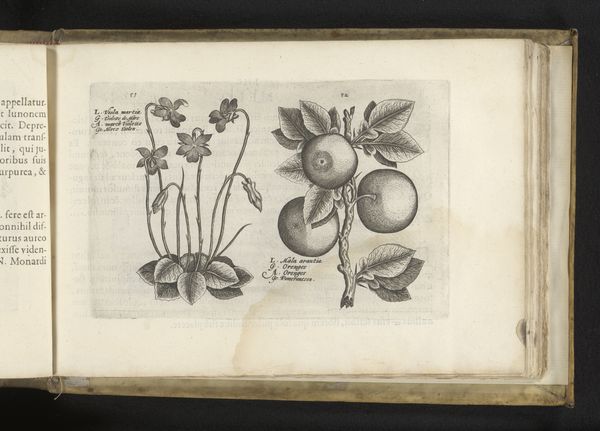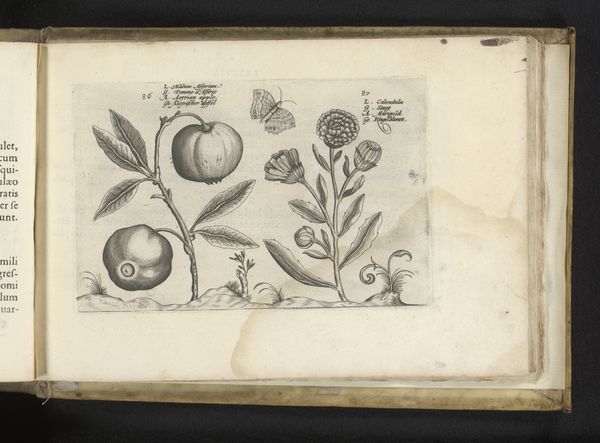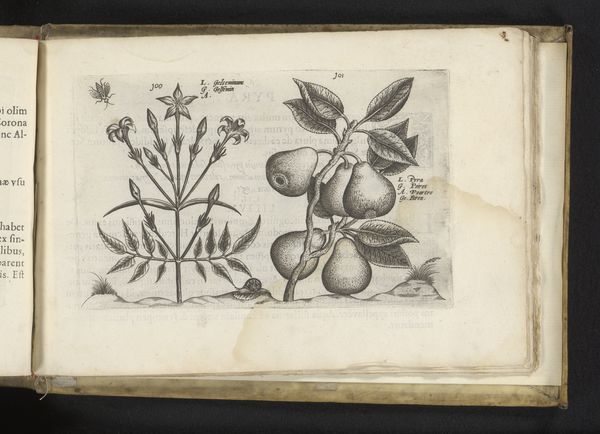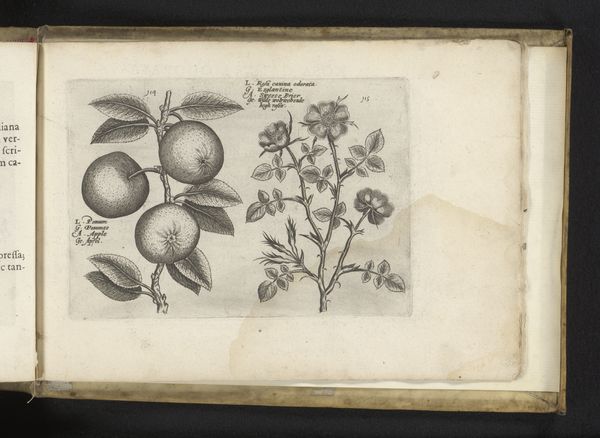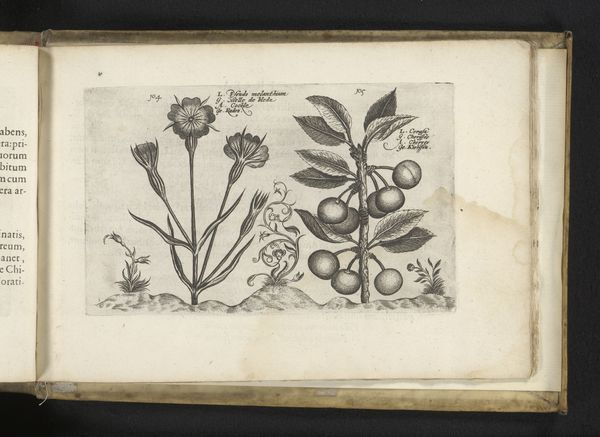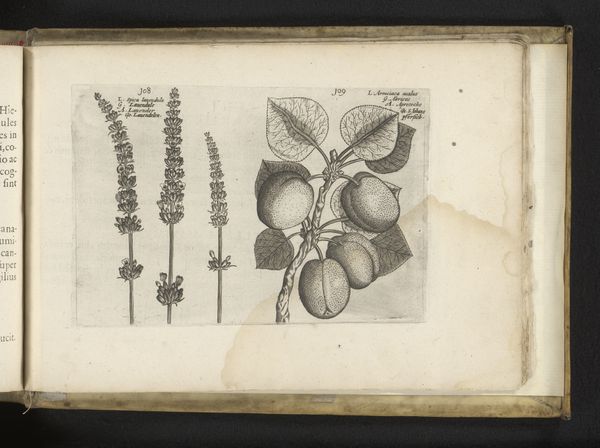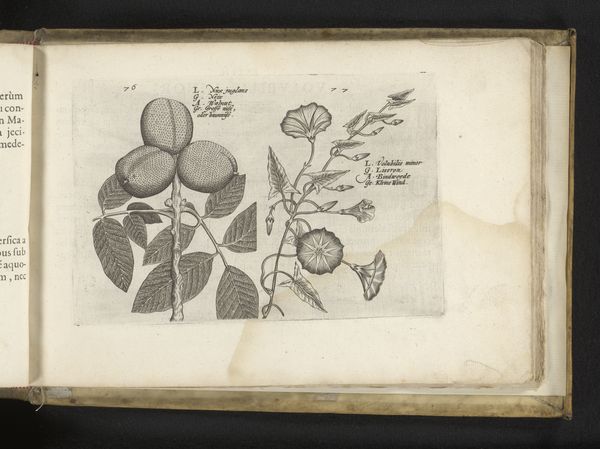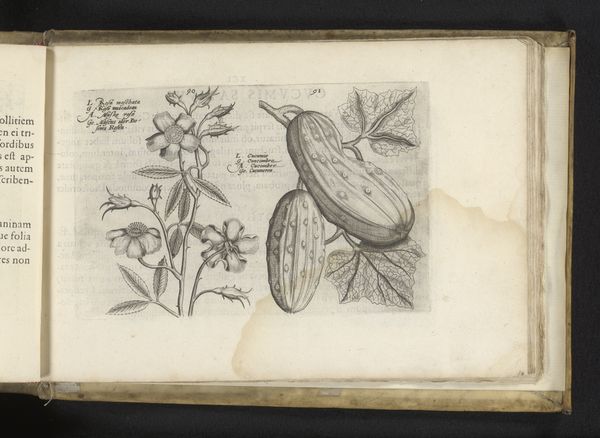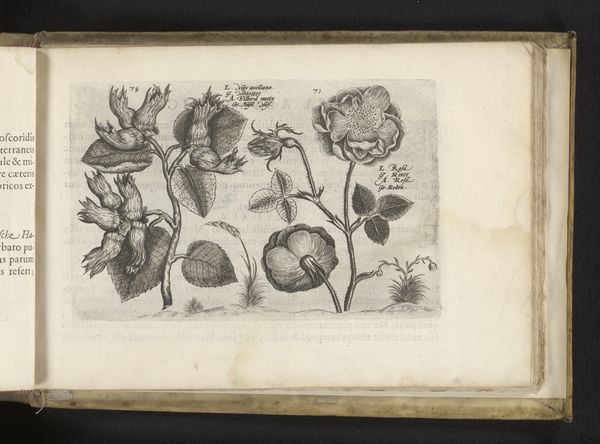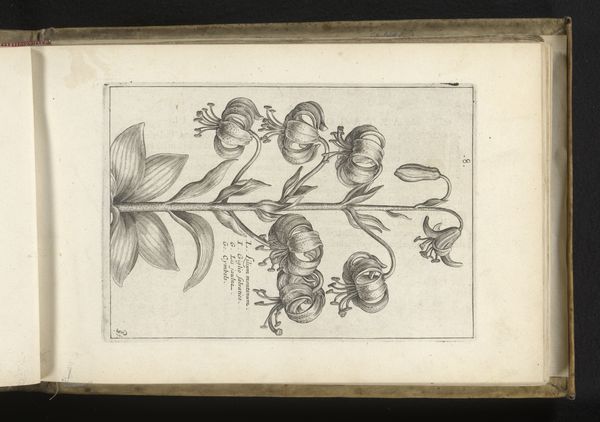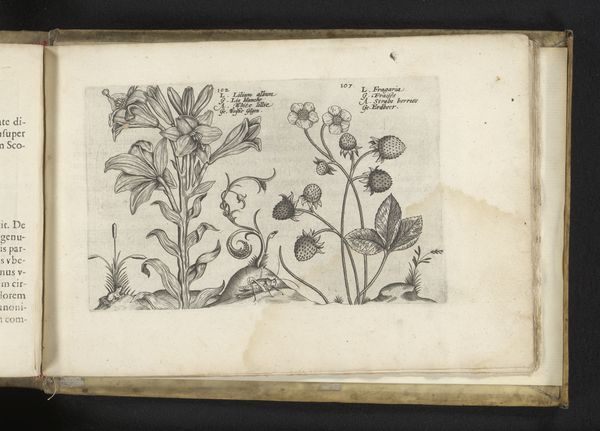
drawing, print, paper, ink, engraving
#
drawing
# print
#
flower
#
paper
#
11_renaissance
#
ink
#
coloured pencil
#
northern-renaissance
#
engraving
Dimensions: height 128 mm, width 188 mm
Copyright: Rijks Museum: Open Domain
This engraving of a violet and an apple tree was made by Crispijn van de Passe the Younger, probably in the first half of the 17th century. It’s made using a printmaking technique called engraving. The image is incised into a metal plate, ink is applied, and then the surface is wiped clean, leaving ink only in the grooves. The plate is then pressed onto paper, transferring the image. The artist, or the artisans in his workshop, would have possessed the skills and tools for precise metalworking. This printmaking process allowed for detailed and repeatable images, which could then be widely distributed. In this period, such botanical illustrations were not just artistic endeavors, they were important documents of a dawning scientific understanding. Consider the labor and skill required for the engraving, and how the print could be sold to a wide audience. Unlike a unique painting, the engraving democratized access to the image. The print is not just an artwork, it's a product of its time, reflecting the growth of both scientific inquiry and commercial exchange.
Comments
No comments
Be the first to comment and join the conversation on the ultimate creative platform.
